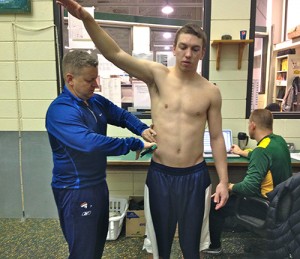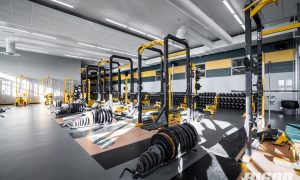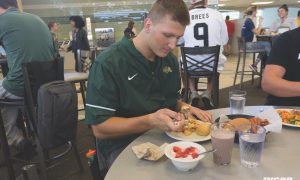Photos by J. Alan Paul Photography
To build the best athlete possible, you need to find the correct architect. Craig Bohl set out to accomplish just that when he took over as head football coach at NDSU.
Who he found was a fellow Nebraska native and former strength coach, Dave Ellis.
Coach Ellis attended the University of Nebraska-Lincoln in the 1980s and was a part of its strength training staff until 1990. He then spent the next four years at Wisconsin before returning to Nebraska in 1994 to become the Sports Nutrition Director until 2001.
Ellis started his own consulting practice called Sports Alliance after the 2001 season and the day he left, he received a phone call from NDSU.
“Craig (Bohl) recognized early that he had tough kids, hardworking kids, but we are going to have to definitely develop the talent to a greater extent,” Ellis said. “Much like we did in Nebraska, but this time up in Fargo.”
NDSU has remained one of the schools that uses Ellis and his team. Ellis also consults with Oklahoma University, Ohio University, Indiana University, University of Montana and Montana State — to name a few.
What Ellis does is come in before every season and uses his system to measure athletes to give director of athletic performance Jim Kramer an estimate of how big every athlete can become.
 “We want to be accurate on what position an athlete might be best suited to play based on their capacity,” explained Ellis, “carrying lean mass and a suitable amount of body fat relative to the position.”
“We want to be accurate on what position an athlete might be best suited to play based on their capacity,” explained Ellis, “carrying lean mass and a suitable amount of body fat relative to the position.”
Ellis meets with each athlete individually and with basic instruments. His measurements include the athletes trunk length, chest depth, shoulder breadth and pelvis width.
Freshmen and sophomores enter the Bison program before there bodies stop growing, Ellis said. Robust characteristics of the body continue to grow throughout an athlete’s career in college and Ellis’ system measures the progress every year to give Kramer and the football staff an estimate of how much muscle and body mass the athlete’s frame can handle.
“Is he a tight end or does he have some potential to play offensive line someday?” Kramer said. “We measure kids that could play safety; OK, we’re questioning his movement and speed right now, so does he have the frame size right now to play linebacker?”
Frame measurements do not determine where the athlete plays on the field, said Kramer. But analyzing his frame, his body mass potential and his quickness gives the football coaches a great feel for what position the athlete might succeed best at.
“Coach Ellis came in and told me how skinny I was,” safety Colten Heagle said about his first measurements with Ellis. Kramer in turn told Heagle to start bulking up, and the Bison safety improved his max bench from 285 to 355 pounds before his shoulder injury last season.
In some cases, athletes need to gain as much weight as they can. Redshirt sophomore Landon Lechler arrived to NDSU standing 6’7’’ and weighing in at 253 pounds.
“’Get to the dining hall,’” Lechler said, remembering one of his first conversations with Coach Kramer. Four or five burgers in one sitting is now a common occurrence for Lechler, who said his weight now fluctuates around 300 pounds in his third year at the football program.
Ellis, the 2014 winner of the Collegiate & Professional Sports Dietitians Association’s “Trailblazer Award,” helps NDSU athletes with their diets, too. He created a fueling tactics chart that recommends what type of foods athletes should be eating everyday.
The chart has three steps: fresh produce and healthy oils, starches and sugars, and protein sources. Ellis returns every year to NDSU to explain the chart to incoming freshmen and helps guide them into being as nourished as possible while gaining or cutting weight.
“The whole process was born from advocacy for athletes when I was playing this role as a dietician,” Ellis, a registered dietician said. “We’re always reeducating and when we’re doing baseline education for freshmen, we lay a lot on them. But the health professionals around the athletes whether it’s straight conditioning or medicine are always there to reinforce.”
Ellis said hiring full-time sports dietitians is the trend at the FBS level. And he said he thinks the next move NDSU could make is hiring a full-time sports dietician for its strength and condition staff.
NDSU has found its architect in Ellis and with his help, NDSU Athletics will continue to see the proper growth and nutrition out of its athletes.











